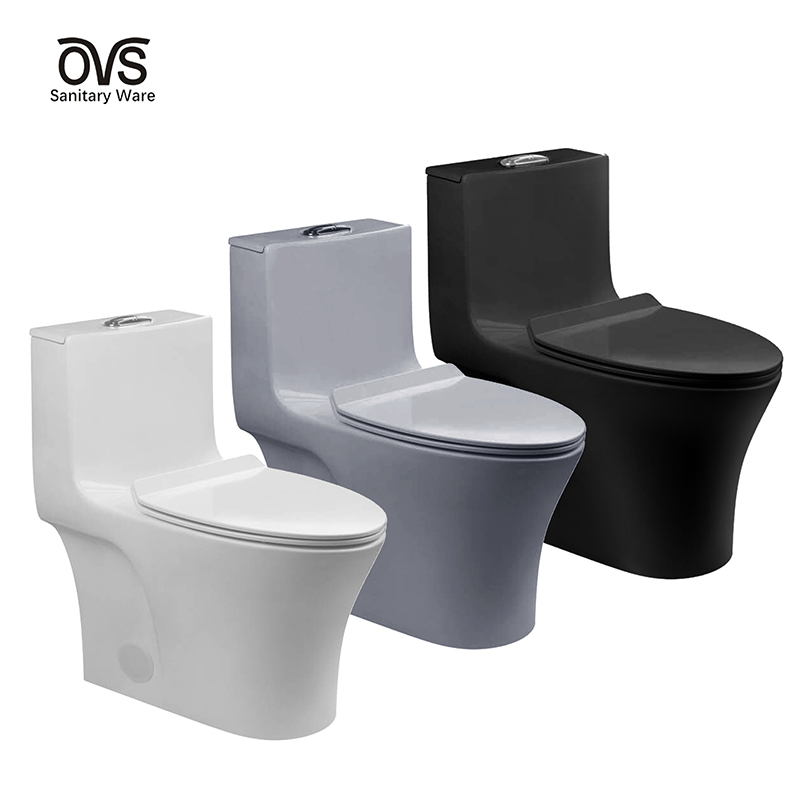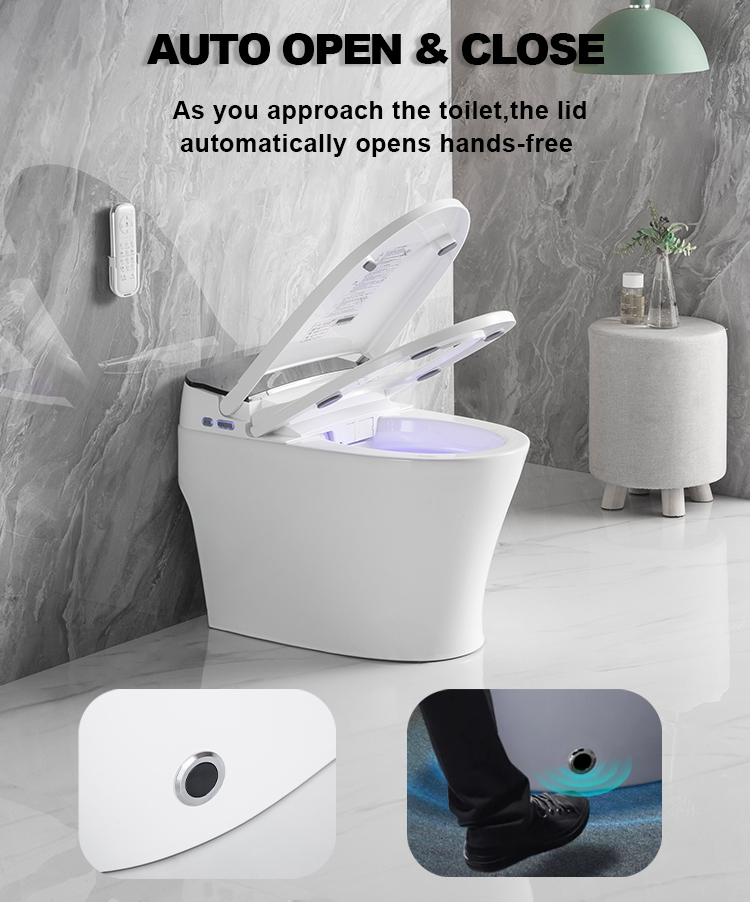The difference between smart toilets and ordinary toilets?
There are many differences in function between ordinary toilets and smart toilets. The following is a detailed introduction to the advantages and disadvantages of their comparison:
The Advantages of ordinary toilet:

1. Cheap price: The price of ordinary toilets is relatively low, which is suitable for ordinary families.
2. Easy to use: The common toilet is simple and convenient to use, and the water discharge can be controlled by the handle.
3. Easy to maintain: Ordinary toilets are easy to maintain, only need to clean and replace valves, water pipes and other vulnerable parts from time to time.
Disadvantages:
1. Incomplete cleaning: Ordinary toilets are traditionally used, and can only discharge feces through water flow, which is difficult to clean and easy to breed bacteria.
2. No measurement function: Ordinary toilets cannot measure the user's physical indicators, and cannot provide users with relevant data reference.
3. Poor water saving effect: Ordinary toilets use a large amount of water, which causes a certain degree of pressure on environmental protection and livability.
The Advantages of the smart toilet:

1. Clean and hygienic: The smart toilet has a series of functions such as flushing, drying, and disinfection, which can ensure the hygiene of users.
2. Humanized design: The smart toilet can provide different water flow and nozzle positions according to the user's physical condition, which can provide a more comfortable use experience.
3. Environmental protection and water saving: The smart toilet adopts advanced water circulation system and flow restriction technology, which can reduce the consumption of water to a minimum.
4. Provide measurement data: The smart toilet can measure the user's physical indicators, such as weight, muscle condition, etc., and provide relevant data reference.
Disadvantages:
1. Expensive: Smart toilets are relatively expensive and may exceed the affordability of ordinary families.
2. Complicated use: The smart toilet has many functions, and the use is relatively complicated, which requires a certain learning cost.
3. Difficult to maintain: Due to the advanced functions of smart toilets, maintenance is also relatively difficult, requiring professionals to maintain and repair.
The Advantages of ordinary toilet:

1. Cheap price: The price of ordinary toilets is relatively low, which is suitable for ordinary families.
2. Easy to use: The common toilet is simple and convenient to use, and the water discharge can be controlled by the handle.
3. Easy to maintain: Ordinary toilets are easy to maintain, only need to clean and replace valves, water pipes and other vulnerable parts from time to time.
Disadvantages:
1. Incomplete cleaning: Ordinary toilets are traditionally used, and can only discharge feces through water flow, which is difficult to clean and easy to breed bacteria.
2. No measurement function: Ordinary toilets cannot measure the user's physical indicators, and cannot provide users with relevant data reference.
3. Poor water saving effect: Ordinary toilets use a large amount of water, which causes a certain degree of pressure on environmental protection and livability.
The Advantages of the smart toilet:

1. Clean and hygienic: The smart toilet has a series of functions such as flushing, drying, and disinfection, which can ensure the hygiene of users.
2. Humanized design: The smart toilet can provide different water flow and nozzle positions according to the user's physical condition, which can provide a more comfortable use experience.
3. Environmental protection and water saving: The smart toilet adopts advanced water circulation system and flow restriction technology, which can reduce the consumption of water to a minimum.
4. Provide measurement data: The smart toilet can measure the user's physical indicators, such as weight, muscle condition, etc., and provide relevant data reference.
Disadvantages:
1. Expensive: Smart toilets are relatively expensive and may exceed the affordability of ordinary families.
2. Complicated use: The smart toilet has many functions, and the use is relatively complicated, which requires a certain learning cost.
3. Difficult to maintain: Due to the advanced functions of smart toilets, maintenance is also relatively difficult, requiring professionals to maintain and repair.

